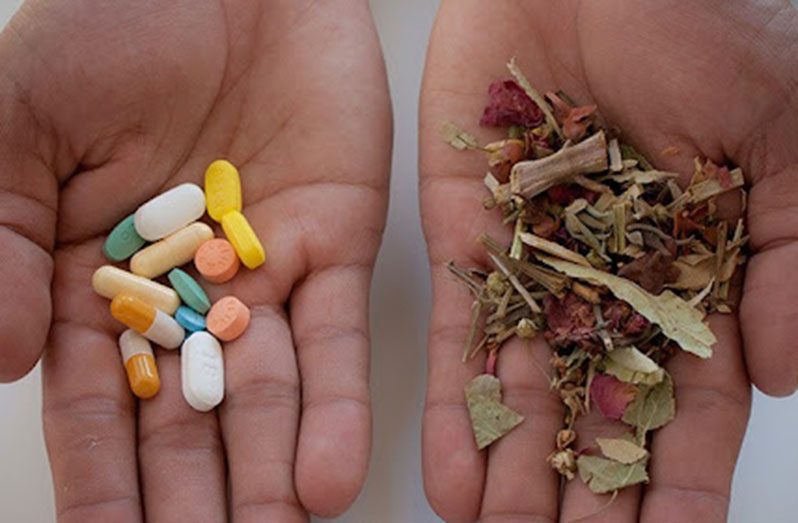THIS year International Patient Safety Day was celebrated on Friday, September 17. Forward thinking health institutions that put patient safety as the number one priority have incorporated a team approach to patient care especially on ward rounds. Patient safety encompasses a wide range of scenarios – nowadays starting with COVID-19 vaccination entry requirements, zero tolerance for deviation from the standard operating safety protocols, particularly in laboratories, and prevention of medication errors in hospitals due to prescribing, administering or dispensing incompetency.
A WHO (World Health Organisation) 2019 study confirmed that 10 per cent of hospitalised patients of high-income countries were harmed while receiving care. Hence, cognisant that errors will occur in reality, systems of checks and balances are instituted where assigned responsibilities, accountability and sign off on judgement calls are a benchmark for error prevention and hence minimising adverse patient outcomes such as disability or death.
With regards to safety concerns and quality assurance of medications, the authority is the FDA (Food and Drug Administration) which reviews the various phases of clinical trials prior to approval for human consumption. However, such requirements are only for conventional medicines where endorsement occurs after rigorous screenings and reviews depending on successful completion of clinical trials from phase one to four differentiated by sample size and sample diversity with respect to demographics, race, age, gender, pregnancy, breast feeding and comorbidities.
These studies carry a high investment cost which explains why innovative or branded medicines have a huge price gap to their generic equivalent after the patent’s period is terminated. In order to protect the intellectual rights from “copy cats” the legal framework or the patent law protects these massive investments. What really determines if a product is here to stay even after the initial marketing hype is the efficacy of the product, where benefits far outweigh the risks.
However, on the other hand, regulations for herbal supplements are minimum (not as rigorous as prescription meds, vaccines or OTC) and are only checked against manufacturing standards (labels with name, strength and disclaimers) but not effectiveness. No studies on efficacies are done with any category of persons to determine how safe or efficacious these products might be.
It is perceived that natural remedies are harmless and free from undesirable effects since almost 65 per cent of modern medicines are derived from them either directly or indirectly after being refined, removing the extraneous materials and tapering the precise amount of active ingredients. However, what is unpublished is the forensic pathology reports which may show cause of death linked to “substance” used not necessarily conventional medication overdose or the disease state in itself. This was observed after tourists travelled to Asian countries in desperate search of a cure. Sometimes combo herbal concoction included unknown contents, contaminants and pharmaceuticals, additives all of which can be injurious to health.
Certain population groups such as pregnant and nursing mothers must be extra cautious since some compounds in herbs cross the placenta causing birth defects and can be found in breast milk. Other affected groups are infants, children and the elderly so self-medication by seniors or administration to juniors without the consult of a health expert can be considered irresponsible.
Today we see the demand for more published peer reviewed studies with sufficient authentic data sampling on vaccines, “the new kid on the block”, but complete non-resistance to traditional medicines which are naively utilised as an alternative medicine without any evidence-based claims. Of course, like any other available commodity, if standards and regulations are not instituted to monitor these herbal remedies then a good resource could be misused resulting in negative effects.
It must be stressed that complete honesty with your physician is absolutely important since some of the herbal meds may aggravate a predisposing illness for example if someone has a risk of hypertension he/she should be advised that the use of green coffee will elevate the pressure and can lead to complications.
What we tend to overlook as consumers is whether there are any potential interactions with prescription drugs and herbal medicines especially since there is limited publicised clinical data to support rational decision making on patient safety matters.
The table below shows how popular herbal meds (both common and chemical names printed) interact with some prescription meds altering their effect due to the interaction:
Herb
(Common name and chemical name) Prescription Drug
& its purpose Interaction Effect on prescription drug Garlic – allium sativum * Chlorpropamide –
A drug for lowering the blood sugar in diabetes.
* Warfarin –
An anti-clotting drug for heart/stroke patients ?Garlic may cause blood sugar to drop too low if the patient is on chlorpropamide.
?Garlic increases the clotting time for patients on warfarin and hence may lead to hemorrhaging. Ginko- balboa * Aspirin –
A drug which helps with inflammation but may increase blood flow due to its antiplatelet function
* Warfarin –
See above
* Thiazide diurectic –
A drug which helps you to reduce the blood pressure by passing excess water ?When ginko balboa is used with aspirin and warfarin bleeding occurs.
When ginko is used with this type of diuretic also referred to as water tablet the blood pressure usually rise. St. John’s Wort – (hypericum perforatum) * Gliclazide – A diabetic
drug for high blood sugar.
* Atorvastatin – A drug to
lower cholesterol.
* Amitriptylline – An anti-
depressant for depression.
* Indinavir – An anti-
retroviral for AIDS.
* Theophylline – A
bronchodilator used in asthma and COPD.
* Oral contraceptives – A
drug to prevent pregnancy. ?The blood concentration of gliclazide, atorvastatin, amitriptyline, indinavir and theophylline are all decreased when used concomitantly with St. John’s wort. Hence your doctor will need to revise your dosage upwards.
St. John’s wort can cause unplanned pregnancies by negating the effect of the oral contraceptives and causes intermenstrual bleeding.
In closing, it must be reinforced that you should seek professional advice from a qualified pharmacist prior to taking any herbal product. Complete disclosure of your established medical history and current medication regimen are two vital elements to present your health care personnel when seeking such advice.
For further advice consult the pharmacist at Medicine Express PHARMACY located at 223 Camp Street, between Lamaha and New Market Streets. If you have any queries, comments or further information on the above topic kindly forward them to medicine.express@gmail.com or send them to 223 Camp Street, N/burg. Tel #225-5142.



.jpg)








